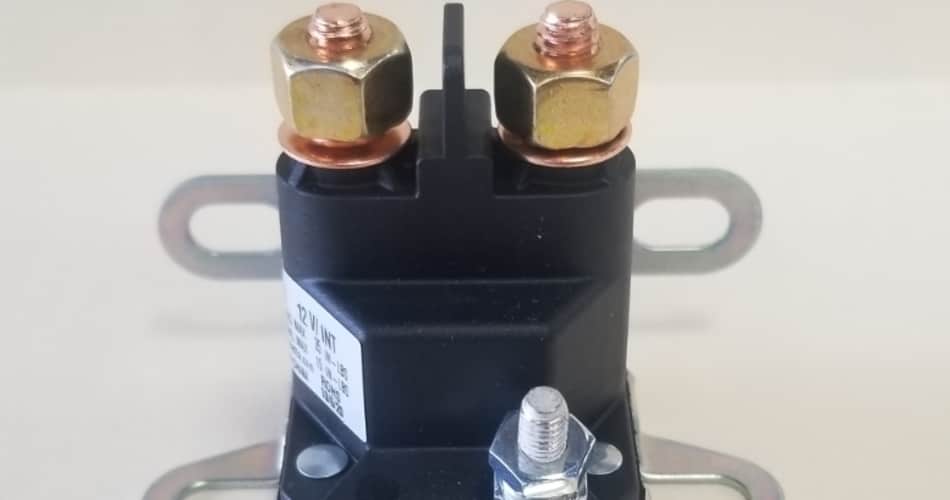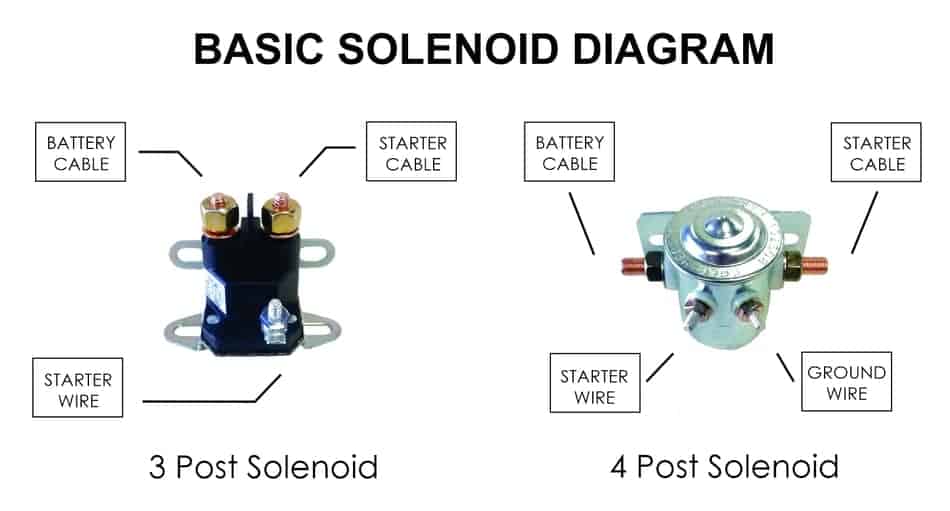How to Tell Your Lawn Mower Solenoid is Bad
I jumped on my lawn mower to start it and all I heard was a clicking sound when I went to start my mower. Electrical problems can be pretty hard to diagnose and take a lot of time to narrow down the issue. It’s a good idea to narrow down the problem and not throw expensive parts at the mower and hope it fixes the issue.
Here are some of my favorite items I use when testing my battery and diagnosing electrical items on my lawn mower: volt-ohms meter, battery charger, and continuity light.

This post may include affiliate links. Purchases made through these links may provide a commission for us, at no extra cost to you. As an Amazon Associate, we earn from qualifying purchases.
Follow all safety instructions provided in your equipment operator’s manual prior to diagnosing, repairing, or operating.Consult a professional if you don’t have the skills, or knowledge or are not in the condition to perform the repair safely.
Table of Contents
What Is a Lawn Mower Solenoid?
A lawn mower solenoid is an on/off switch of sorts. It is an electromagnet switch that is actuated to engage the starter motor to turn your engine over. The solenoid can be found mounted on the starter. However, it does not have to be mounted on the starter to do its job.
Some lawn mower solenoids can be found mounted closer to the battery than the starter.
Three & Four Post Solenoids
This is a typical wire schematic of three and four-post solenoids. Remember, not all wire schematics are the same for every lawn mower. Some schematics will include wiring for options like lights and 12-volt ports. These diagrams only show the basic wiring schematic.

How to Identify Your Lawn Mower Solenoid?
Your solenoid may be round or square in shape with either 3 or 4 posts sticking out of it. You will find some solenoids attached right to the top of the starter.
The positive (+) wire from the battery attaches to one side of the solenoid. Following the positive wire off the battery is an easy way to find your solenoid.
You will find solenoids on every electric start engine. Not only will you find solenoids on electric start lawn mowers, but you will also find them in trucks, cars, and tractors.
What Causes a Lawn Mower Solenoid to Go Bad?
A solenoid is an electrical switch. As we all know, an electrical item can fail at any time.
Inside the solenoid, you will find a spring and copper plate. A lawn mower solenoid can go bad if the spring gets weak or the copper plate starts to corrode. The solenoid can also fail as a result of a weak starter, bad battery, or bad ground.
It is good to know what to look for when you are diagnosing a solenoid.
Symptoms of a Bad Solenoid on a Riding Lawn Mower
A riding lawn mower solenoid may be bad when you hear a click or hum when you turn the ignition key and your mower doesn’t start. Another indication your solenoid may be bad is when a wire gets hot and begins to smoke or melt.
Steps to Diagnose a Bad Lawn Mower Solenoid
List Tools Needed:
- Volt-Ohms Meter
- Screwdriver
- Continuity Light
- Wrenches to check for loose wires
- Needle Nose Pliers (If screwdriver does not work)
- Battery Charger (Optional)
If you are going to diagnose the solenoid on your lawn mower, there are a few ways to do so.
1. Make Sure Your Battery Has a Full Charge
Use your voltmeter to make sure your battery has at least 12.3 volts in it. Read more about testing your battery in our article “5 Things That Are Draining the Life of Your Lawn Mower Battery“.
2. Get Your Mower Ready to Start
- Set the parking brake
- Make sure your lawn mower is in neutral
- Turn the key to the on position
3. Bypass the Starter Solenoid Using a Screwdriver
Lay a long screwdriver over the solenoid to touch the two cables to bypass the starter. The two cables you are looking for are the cable from the battery and cable to the starter.
It may throw a spark when the screwdriver makes contact with the wires. This is common so don’t be alarmed.
If the engine happens to turn over while you have your solenoid bypassed there is a good chance your solenoid is bad. If the screwdriver does not work well, you can also use needle nose pliers to jump the solenoid.
You may only have loose wires or bad ground so you will need to check these items out before you replace the solenoid.
4. Test the Solenoid
Solenoids that are mounted on the starter can be tested. Remove the starter from the engine and test the solenoid with a battery charger. This is a good way to watch if the starter is working with the solenoid.
Once the starter has been removed from your lawn mower, you need to attach the negative (-) clamp to the case of the starter and touch the positive (+) clamp to the big post and exciter wire on the solenoid. This is just a quick bench test when the starter is out.
Can You Bypass a Lawn Mower Solenoid?
A lawn mower solenoid can be bypassed by placing a long screwdriver from across the solenoid from touching the cable from the battery to the cable to the starter. Be careful. The connection could cause a spark which is normal.
Related Topics
Another reason why your mower may not start is due to water in the electrical system. Read our article “Why Your Mower Won’t Start After Leaving in the Rain”.
Still Having Problems with Your Lawn Mower?
Lawn mower ownership doesn’t come without its frustrations. Own a lawn mower long enough, you are bound to run into many lawn mower problems including starting, smoking, leaking, cutting, and overheating.
For a list of the most common lawn mower problems and items that can cause them, check out my guide “Common Lawn Mower Problems: Solved!“







